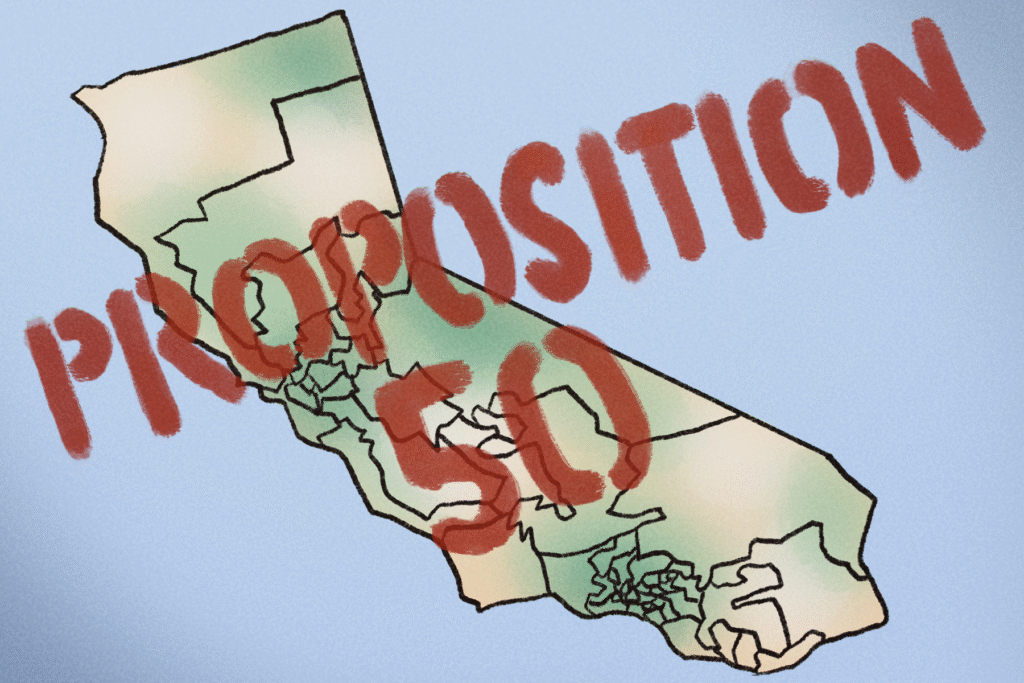California’s New Redistricting Measure: Proposition 50
On November 4, California voters passed Proposition 50, a significant constitutional amendment aimed at reshaping the state’s congressional district boundaries. With 64% approval, this measure is expected to enable Democrats to reclaim five congressional seats currently held by Republicans in the upcoming 2026 elections. The changes will be enacted from 2026 to 2030, after which the traditional redistricting methods will resume.
A Reaction to National Trends
Proposition 50 emerges as a direct response to concerns about gerrymandering, especially practices implemented in Republican-controlled states such as Texas, where lawmakers recently approved a redistricting plan designed to secure additional seats for Republicans. California’s Governor Gavin Newsom vocally opposed these efforts and called for a special election to implement fairer congressional redistricting through Proposition 50.
According to Tyler Simko, a political science professor, the measure garnered strong backing from Californians disillusioned with Trump-era redistricting practices. He noted, “Many supporters, including Governor Newsom, framed the referendum as a necessary counteraction to Trump and the national GOP, which resonated with voters focused on broader national implications rather than local congressional concerns.”
The Role of Social Media in Mobilization
Support for Proposition 50 was significantly amplified through social media advertising, highlighting endorsements from influential figures like former President Barack Obama and Congresswoman Alexandria Ocasio-Cortez. These ads frequently criticized Trump, drawing stark attention to partisan issues.
Ciera Hammond, a political science PhD candidate and native Californian, pointed out that social media played a crucial role in raising awareness about redistricting initiatives. “Before the rise of social media, voters in California might not have been as informed about Texas voting tactics. This proposal became a national focal point, drawing scrutiny from across the country.”
Potential Consequences of Partisan Redistricting
The passage of Proposition 50 raises critical questions about the future of redistricting in a polarized environment. Traditionally, California employed an independent Citizens Redistricting Commission to manage district setups. However, the recent shift toward partisan measures stirs concerns about increasing polarization throughout the nation.
Hammond emphasized the importance of maintaining neutral redistricting practices. She believes it would be more conducive to democracy if independent commissions were allowed to manage delineations rather than enabling political parties to exploit their power.
Partisan gerrymandering remains largely unchecked following the 2019 U.S. Supreme Court ruling in Rucho v. Common Cause, which determined that such practices are legal at the federal level. Walter Mebane, a political science professor, remarked that the passage of Proposition 50 signifies a realignment among public sentiments around state redistricting efforts.
An Uncertain Future for Redistricting
Simko highlighted the ongoing “redistricting war,” stating that predicting the implications of Proposition 50 is currently challenging. Other states, like Virginia, are observing California’s approach, particularly following their recently strengthened Democratic majority.
Similarly, Michigan has employed an independent redistricting commission, which might be less impacted by this national trend compared to states moving toward partisan redistricting. According to John Chamberlin, a political science professor emeritus, Michigan is likely to continue with its current commission framework leading to the next census in 2030, maintaining a stable approach to redistricting.
Conclusion
Proposition 50 illustrates California’s proactive stance amidst national discussions on fair electoral practices. While it seeks to mitigate partisan-driven gerrymandering, it raises fundamental questions about the future of democracy and representation in American politics.
For further details about the ongoing implications of Proposition 50, explore additional resources on redistricting challenges and citizen-led redistricting commissions.
